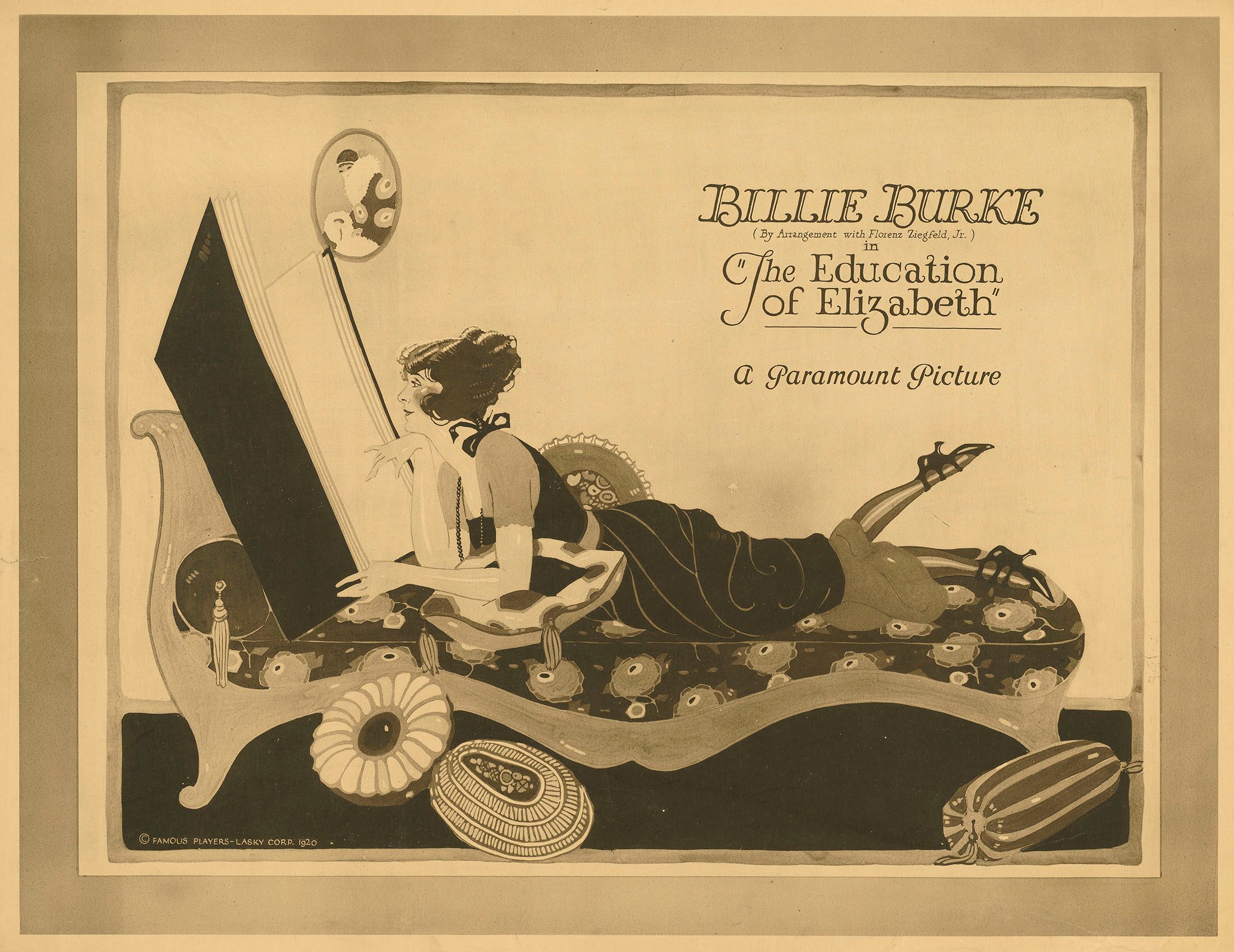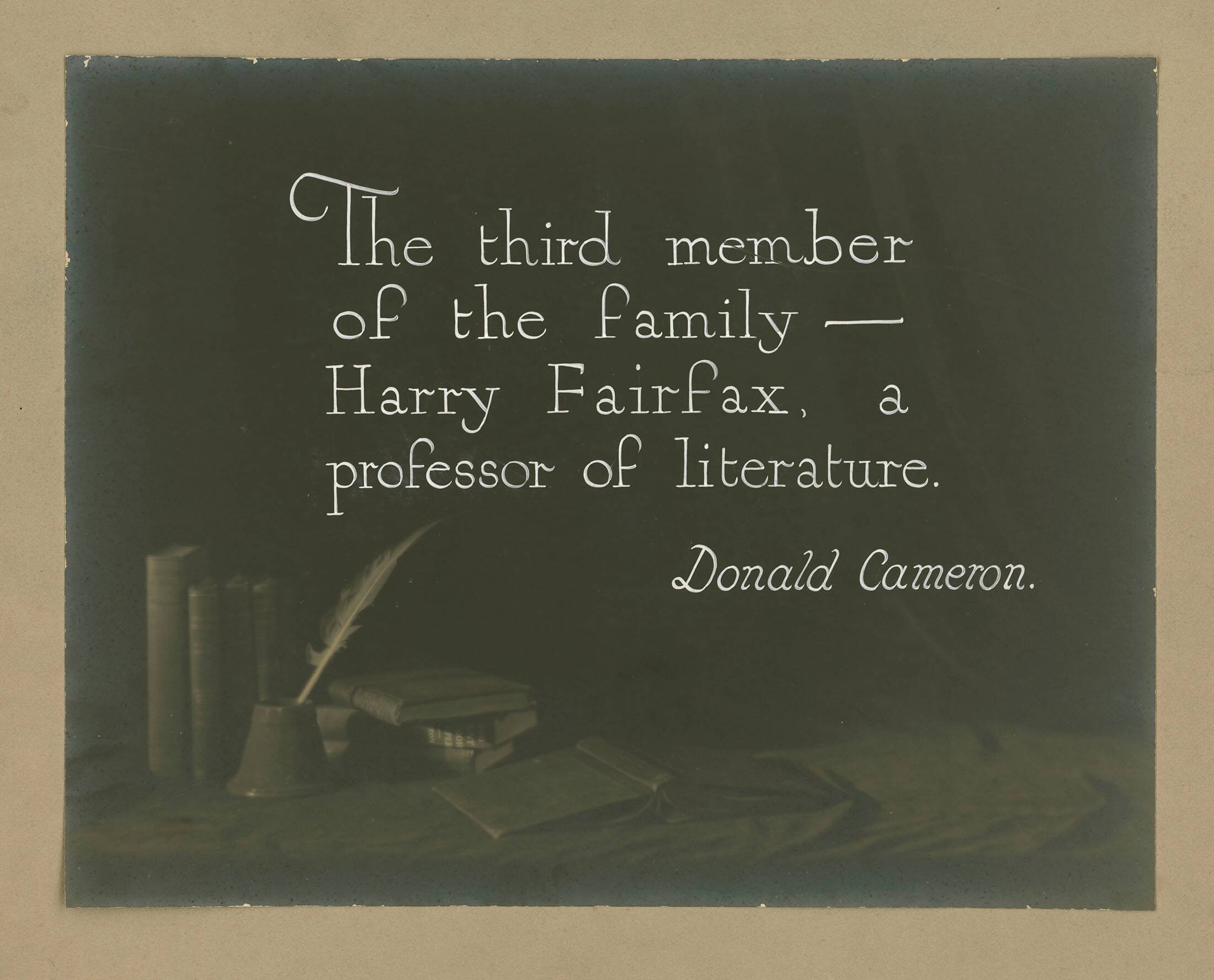This whimsical illustration from the 1921 film, The Education of Elizabeth, perfectly fits the image of silent film star Billie Burke. Although she came to prominence on the stages of London and New York, Burke first appeared on screen in 1916 and is perhaps best known for her role as Glinda in The Wizard of Oz (1939). The same appeal that she brought to that character is evident in this charming print, which depicts Burke at the height of her career. Burke was a fan favorite in part because of her stylish dress sense, which is seen here to great advantage.
Burke’s star image relied heavily on her lifestyle. Married to theatrical showman Florenz Ziegfeld, she was an avowed clotheshorse who frequented the New York salon of couturier Lucile. The roles that she played in the Teens and Twenties took advantage of her personal style and wardrobe, to which she partially attributed her success. Signed to a Hollywood contract with Jesse L. Lasky in 1915, Burke had the good fortune to be at a studio that supported her glamorous image with leading roles as modern day heroines. At the time she was the highest-paid actress in Hollywood and became a fashion trendsetter.
Although we don’t know the illustrator of this drawing, their highly decorative design style captures Burke’s charm and modern sensibilities, which were the focus of the film’s admittedly thin plot. Playing a showgirl wooed by an aristocrat, Burke eventually falls in love with his younger brother, who initially seems interested only in books. Propped up on cushy pillows on a sumptuous chaise lounge, with her thoroughly modern bobbed illusion hairstyle, Burke is reading a book so enjoyable that she imagines herself as its protagonist, clad in the fabric on which she lays. Despite the decadence of the setting, she's completely at ease.
As depicted in the poster, Elizabeth's endearingly playful nature is in stark contrast to that of the younger brother, Harry, who is seen here in the title card that introduces him. The desk covered in books and the acknowledgment that Harry is a professor of literature cast him as a serious and erudite character. Based on the contrast between the images of Elizabeth and Harry, it would seem that the film employs a beloved staple of romantic comedies: when opposites attract.
In the sound era, Burke had a significant comeback as Katharine Hepburn's mother in the George Cukor film A Bill of Divorcement (1932), after which she reteamed with Cukor for the all-star comedy Dinner at Eight (1933). The late Ziegfeld was the subject of an Oscar-winning biopic, The Great Ziegfeld (1936), for which Burke was turned down for the role of playing herself in favor of Myrna Loy (incredibly, because she wasn't deemed young enough). Burke's career continued on the big screen into the 1950s, and she even transitioned to radio and television; in the latter format she became one of the earliest talk show hosts with the program At Home with Billie Burke.
These items, along with more than 45,000 other posters and title cards, are part of the Library’s Graphic Arts collection. More posters for Billie Burke may be viewed in the Library Catalog.



